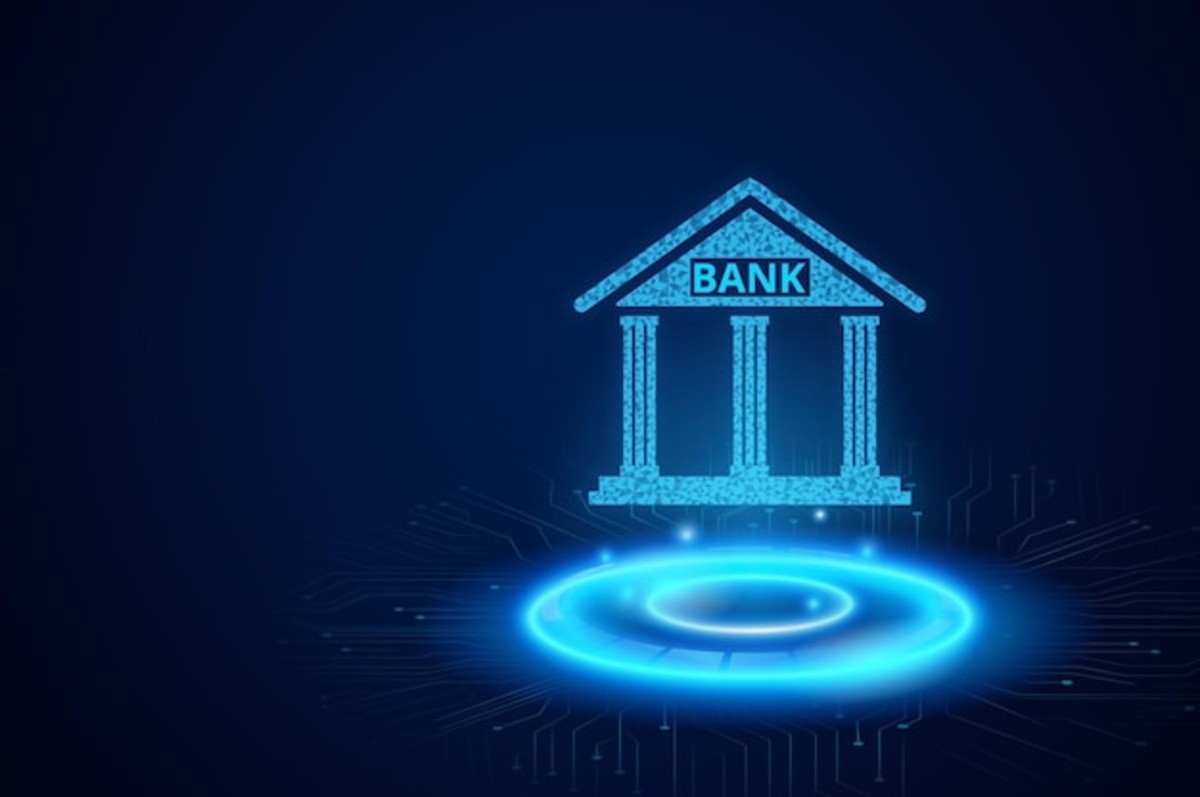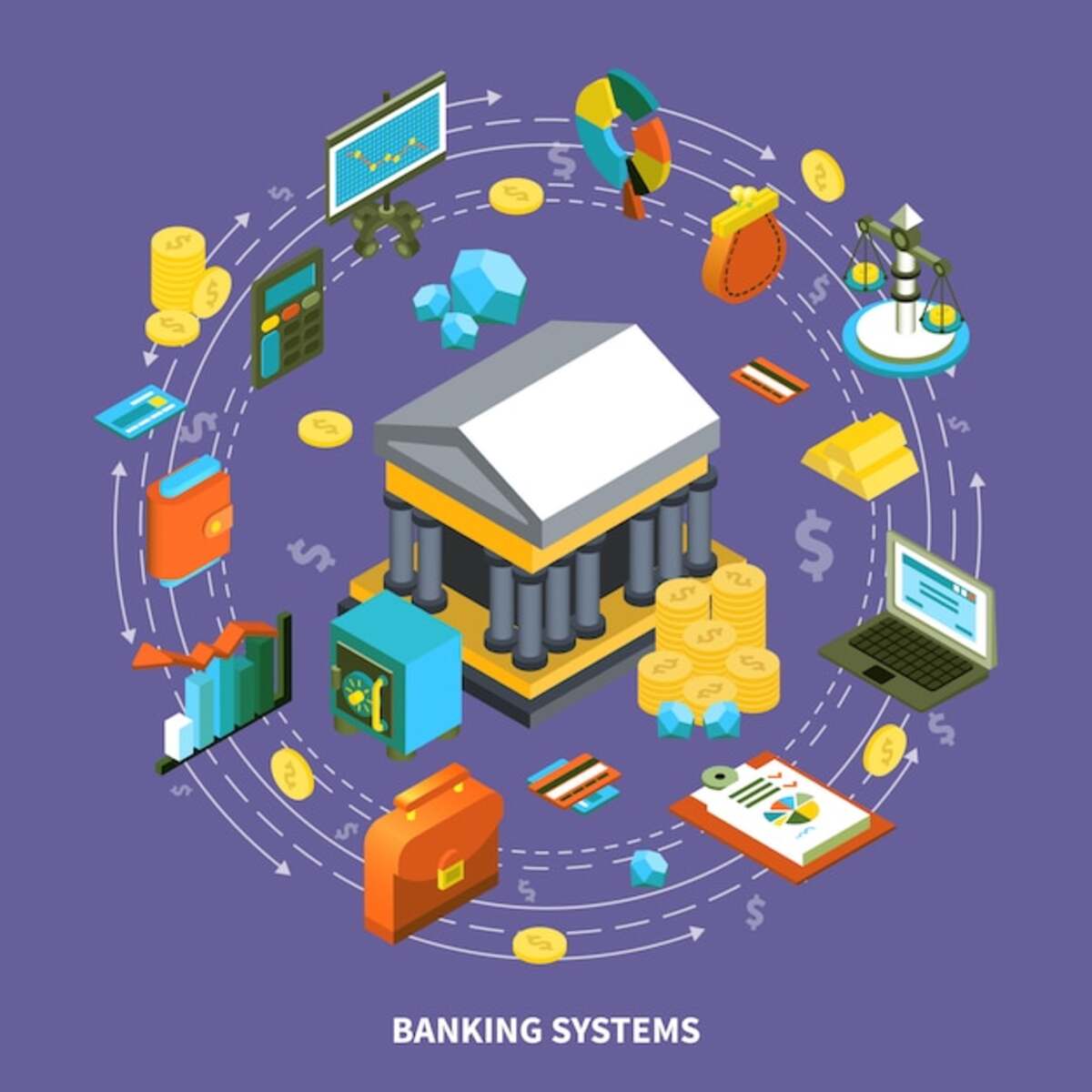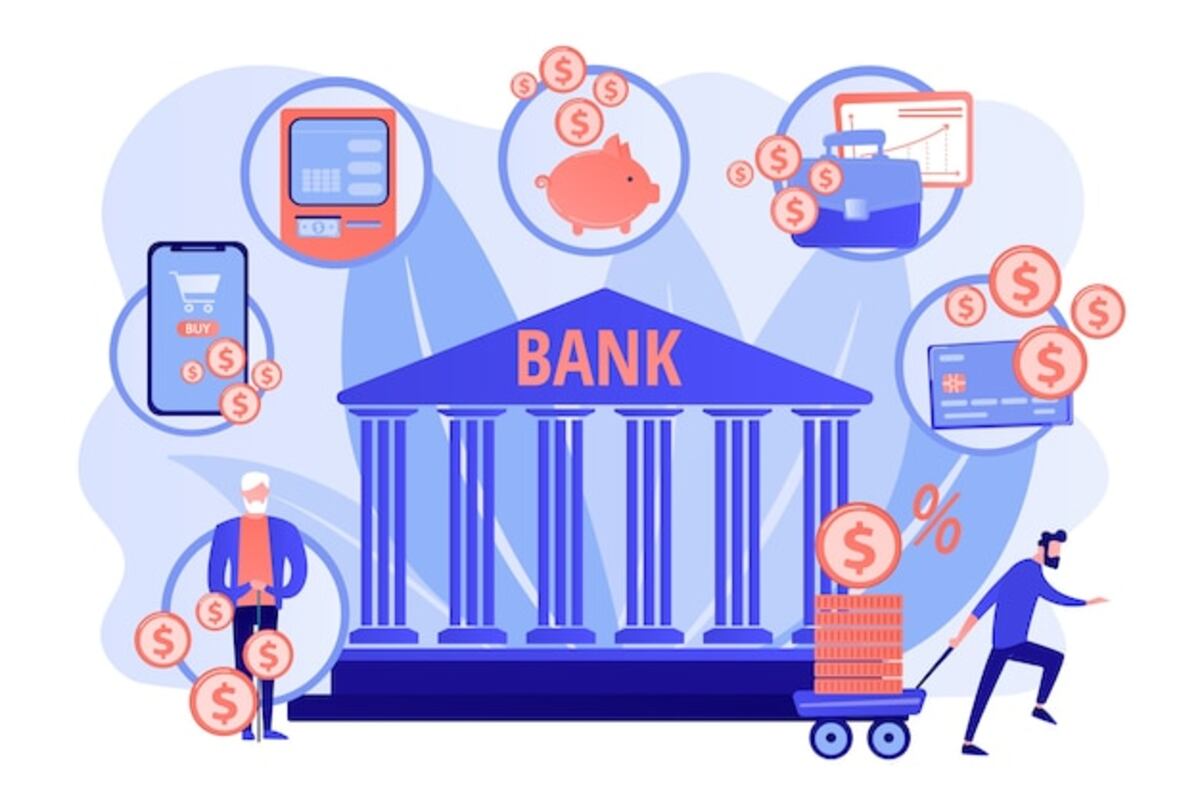Banking institutions are pivotal in shaping our economic landscape and daily lives in today’s fast-paced world. These institutions have become integral to modern society, from managing our finances to providing essential services. This article explores banking institutions’ functions, types, and significance.
1. Introduction to Banking Institutions
Banking institutions play a pivotal role in modern economies by facilitating financial transactions, offering various financial services, and promoting economic growth. They serve as intermediaries between savers and borrowers, providing a secure platform for managing money, making payments, and accessing credit. Here’s an introduction to banking institutions:
- Definition and Functions: Banking institutions, often referred to simply as banks, are financial intermediaries that provide a range of financial services to individuals, businesses, and governments. Their primary functions include:
- Accepting Deposits: Banks offer a safe and secure place for individuals and businesses to deposit their money. These deposits can be withdrawn on demand or after a specified notice period.
- Providing Loans and Credit: Banks lend money to individuals, businesses, and governments to fund various activities, such as purchasing homes, expanding businesses, or financing public projects. This process channels funds from savers to borrowers.
- Facilitating Payments: Banks provide payment services that allow individuals and businesses to make transactions and transfer money efficiently. This includes services like electronic funds transfers, checks, and credit/debit card payments.
- Managing Risk: Banks help manage financial risk by offering various types of insurance, investment products, and risk management solutions.
- Currency Exchange: Many banks provide foreign exchange services, allowing customers to convert one currency into another for international trade and travel.
- Investment Services: Some banks offer investment advisory services, mutual funds, and other investment products to help customers grow their wealth.
2. Types of Banking Institutions:

There are different types of banking institutions, each serving specific needs:
- Retail Banks: These are the banks most individuals and small businesses are familiar with. They provide various services like savings accounts, checking accounts, loans, mortgages, and basic investment options.
- Commercial Banks: These banks serve larger businesses and corporations by providing business loans, treasury management services, and other specialized financial products.
- Investment Banks: Investment banks primarily deal with capital markets, assisting corporations and governments in raising capital through underwriting, mergers and acquisitions, and securities trading.
- Central Banks are national or regional institutions responsible for controlling a country’s money supply, setting interest rates, and maintaining overall financial stability.
- Credit Unions: Credit unions are member-owned financial cooperatives that offer services similar to retail banks, often with a focus on a specific community or industry.
- Online Banks: Also known as Internet banks, these institutions operate solely online, offering services like online account management, bill payments, and mobile banking.
- Savings Banks: These banks traditionally focused on providing individuals with savings accounts and mortgage loans, but their services have expanded.
- Cooperative Banks: Cooperative banks are owned and operated by their members (depositors), who have a say in the bank’s policies and operations.
- Regulation and Supervision: Government agencies heavily regulate and supervise banking institutions to ensure financial stability, consumer protection, and fair practices. Regulatory bodies establish capital requirements, oversee risk management, and enforce rules to prevent fraud.
3. Evolution of Banking: From Ancient Times to Modernity
The evolution of banking spans thousands of years and has been shaped by various civilizations, economic systems, technological advancements, and regulatory changes. Here’s a brief overview of the critical stages in the evolution of banking from ancient times to modernity:
1. Ancient and Classical Civilizations:
- Mesopotamia: The earliest recorded form of banking dates back to ancient Mesopotamia, where temples acted as safe places for storing grain and other commodities. Temples also issued clay tablets that served as early forms of promissory notes.
- Egypt: Ancient Egyptians practiced rudimentary banking by providing loans and facilitating payments for merchants and traders.
- Greece and Rome: Individuals and private moneylenders conducted Moneylending and banking activities. Temples and wealthy families often held deposits and lent money.
2. Medieval and Renaissance Periods:
- Medieval Europe: During the Middle Ages, moneylenders and merchant bankers emerged. Some Italian city-states, like Florence and Venice, played a significant role in early banking, conducting international trade and offering financial services.
- Knights Templar: A medieval Christian military order, the Knights Templar, established a banking system in the 12th century that facilitated the safekeeping of assets, money transfers, and lending.
3. Emergence of Modern Banking:
- 17th and 18th Centuries: Banking began to evolve further with the establishment of the first public banks, such as the Bank of England, in 1694, which marked the beginning of central banking.
- 19th Century: The Industrial Revolution and colonial expansion increased the demand for banking services. Commercial banks started to provide loans to support industrialization and trade.
- Gold Standard: Many countries adopted the gold standard during this period, tying their currency’s value to a specific amount of gold.
4. 20th Century:
- Central Banking: Central banks gained prominence in controlling monetary policy, stabilizing economies, and ensuring financial stability.
- Globalization: Advances in communication and transportation led to increased international trade and the need for global financial services.
- Great Depression: The stock market crash of 1929 and subsequent economic turmoil prompted regulatory reforms, including the Glass-Steagall Act in the United States, separating commercial and investment banking.
5. Modern Era:
- Digital Revolution: The late 20th and early 21st centuries witnessed a digital revolution that transformed banking. Online banking, ATMs, electronic fund transfers, and mobile banking have become widespread.
- Deregulation: Many countries undertook financial deregulation, blurring lines between different financial institutions and increasing competition.
- Financial Crisis (2008): The global financial crisis highlighted the importance of effective regulation and risk management in the banking sector.
6. Fintech and Beyond:
- Fintech: Technology integration into financial services led to the rise of fintech startups, offering innovative solutions such as peer-to-peer lending, digital wallets, and robo-advisors.
- Blockchain and Cryptocurrencies: The development of blockchain technology gave birth to cryptocurrencies like Bitcoin, challenging traditional banking and payment systems.
- Regulatory Changes: Governments and international organizations continue to refine regulations to ensure financial stability, consumer protection, and cybersecurity in an increasingly interconnected world.
4. Types of Banking Institutions
Various banking institutions cater to different needs, preferences, and market segments. These institutions vary in terms of their structure, services offered, and target clientele. Here are some common types of banking institutions:
- Commercial Banks: Commercial banks are the most well-known type of banking institution. They offer various financial services to individuals, businesses, and government entities. These services include savings and checking accounts, loans, credit cards, and investment products. Commercial banks also play a vital role in the economy by providing loans for various purposes, facilitating payments, and managing risk.
- Retail Banks: Retail banks primarily serve individual consumers by providing essential banking services like checking and savings accounts, loans, mortgages, and credit cards. They typically have a network of physical branches and offer online banking options.
- Community Banks: Community banks are smaller banks that focus on serving local communities or specific regions. They often emphasize personalized customer service and community involvement. Community banks may offer various financial services similar to larger commercial banks.
- Credit Unions: Credit unions are member-owned financial cooperatives that provide banking services to their members. They are usually formed around a specific community, profession, or other affiliations. Credit unions often offer competitive interest rates on savings and loans and emphasize a customer-centric approach.
- Online Banks (Virtual Banks): Online banks operate exclusively online, without physical branches. They offer a wide range of banking services through websites and mobile apps. Online banks often provide higher interest rates on savings and lower fees due to their lower overhead costs.
- Digital-Only Banks (Neobanks): Digital-only banks, also known as neobanks, are entirely digital and often mobile-focused. They provide a streamlined and user-friendly experience through mobile apps. Neobanks typically offer essential banking services like checking and savings accounts and may include budgeting tools and financial management features.
- Investment Banks: Banks provide financial services to businesses, governments, and institutional clients. They offer services like raising capital through securities issuance, mergers and acquisitions advisory, underwriting, trading, and research. Investment banks also play a role in capital markets and investment banking activities.
- Development Banks: Development banks focus on financing development projects and initiatives contributing to economic growth and infrastructure development. They often work in partnership with governments and international organizations to support projects in areas like infrastructure, agriculture, and social development.
- Central Banks: Central banks are the regulatory authorities responsible for monetary policy and financial system stability. They manage a country’s currency, control the money supply, and act as lenders of last resort to financial institutions during times of crisis.
- Savings Banks: Savings banks are financial institutions that traditionally focus on accepting deposits and providing mortgage loans. They often have a local or regional presence and may offer a range of banking and financial services.
- Cooperative Banks: Cooperative banks are owned and operated by their members, typically customers and employees. These banks focus on meeting the financial needs of their members and may provide various banking services.
- Islamic Banks: Islamic banks operate by Islamic principles, prohibiting interest (usury) and certain speculative activities. Instead, they offer financial products that comply with Sharia law, such as profit-sharing arrangements and asset-backed transactions.
5. Critical Functions of Banking Institutions

Banking institutions perform critical functions that are essential for the smooth functioning of the financial system and the economy as a whole. These functions play a fundamental role in facilitating economic activities, managing risk, and ensuring the efficient allocation of resources. Here are some of the vital critical functions of banking institutions:
- Acceptance of Deposits: Banking institutions provide a safe and secure place for individuals, businesses, and other entities to deposit money. This function helps people safeguard their funds and access them when needed.
- Lending and Credit Provision: Banks lend money to individuals and businesses for various purposes, such as purchasing homes, starting or expanding businesses, and funding projects. This function promotes economic growth by providing access to capital that may not be immediately available.
- Payments and Settlements: Banking institutions facilitate the movement of funds between individuals and entities through payment systems. They enable transactions such as wire transfers, electronic fund transfers, and check clearing, which are crucial for commerce and daily financial transactions.
- Intermediation: Banks act as intermediaries between depositors and borrowers. They take in deposits from savers and lend these funds to borrowers, allowing for the efficient allocation of capital and resources in the economy.
- Creation of Money: Banks create money through the fractional reserve banking system by lending out a portion of their deposits. This function contributes to the money supply and supports economic activity.
- Risk Management: Banking institutions provide financial instruments and services to help individuals and businesses manage various risks. This includes offering insurance products, derivatives, and hedging services to mitigate financial exposure.
- Monetary Policy Implementation: Central banks work closely with banking institutions to implement monetary policy. Central banks aim to control inflation, stimulate economic growth, and stabilize the financial system by influencing the money supply, interest rates, and credit availability.
- Financial Intermediation: Banks facilitate the flow of funds from savers to borrowers, helping to bridge the gap between those who have excess funds and those who need them. This function promotes efficient capital allocation and supports investment.
- Financial Advisory Services: Banking institutions offer financial advisory services to help individuals and businesses make informed decisions about managing their finances, investing, and planning for the future.
- Foreign Exchange Services: Banks provide foreign exchange services to facilitate international trade and cross-border transactions. They help individuals and businesses convert currencies and manage foreign exchange risks.
- Safekeeping and Custody Services: Banks offer safekeeping and custody services to hold and protect valuable assets, such as securities, on behalf of clients. This function is crucial for investors and institutions that require a secure storage solution.
- Economic Stability and Systemic Risk Management: Banks play a role in maintaining economic stability by providing a stable source of funding and credit during economic volatility. They also contribute to managing systemic risks that could disrupt the entire financial system.
6. Regulation and Oversight of Banking Institutions
Banking institutions are subject to various regulations and oversight mechanisms to ensure their stability, transparency, and fair treatment of customers. The exact regulatory framework can vary by country, but here are some general principles that typically apply:
- Central Banks: Central banks, such as the Federal Reserve in the United States or the European Central Bank in the Eurozone, play a critical role in overseeing and regulating banks. They manage monetary policy, control the money supply, and often have supervisory authority over financial institutions.
- Prudential Regulation: Prudential regulation focuses on ensuring the safety and soundness of financial institutions. This involves setting capital requirements, liquidity standards, and risk management guidelines to prevent excessive risk-taking that could lead to economic instability.
- Deposit Insurance: Many countries have deposit insurance programs to protect bank customers’ deposits if a bank fails. For instance, in the U.S., the Federal Deposit Insurance Corporation (FDIC) insures deposits up to a specific limit per depositor per institution.
- Licensing and Authorization: Banking institutions typically require a license or authorization to operate. Before granting such permits, regulators review the institution’s financial health, management, and compliance with regulations.
- Anti-Money Laundering (AML) and Know Your Customer (KYC): Banks must implement measures to prevent money laundering, terrorist financing, and other illicit activities. They must perform due diligence to understand their customers’ identities and sources of funds.
- Consumer Protection: Regulations often dictate how banks treat their customers fairly and transparently. This includes rules on disclosing terms and fees, providing accurate information, and handling complaints.
- Capital Adequacy and Stress Testing: Banks are required to maintain a certain level of capital to absorb potential losses. Regulators conduct stress tests to assess how healthy banks withstand adverse economic scenarios.
- Market Conduct and Fair Practices: Regulations aim to prevent market manipulation, insider trading, and unfair practices that could undermine market integrity and investor confidence.
- Cybersecurity and Data Protection: With the increasing reliance on digital services, banks must implement strong cybersecurity measures to protect customer data and ensure the integrity of financial transactions.
- Cross-Border Regulations: Banks operating internationally are subject to their home country’s regulations and those of the countries where they work. This includes complying with foreign exchange controls, trade restrictions, and international sanctions.
- Supervision and Enforcement: Regulatory agencies monitor and supervise banks to ensure they comply with regulations. They have the authority to conduct audits, examinations, and investigations. Non-compliance can lead to penalties, fines, and even the revocation of banking licenses.
- Resolution Framework: Many jurisdictions have established frameworks to handle the orderly resolution of distressed banks, aiming to minimize the impact on the financial system and protect depositors and creditors.
7. Advantages and Disadvantages of Banking Institutions
Banking institutions offer various advantages and disadvantages, depending on your financial needs, preferences, and circumstances. Here are some of the key advantages and disadvantages to consider:
1. Advantages:
- Financial Services Variety: Banking institutions provide various financial products and services, including checking and savings accounts, loans, credit cards, investment opportunities, and more. This diversity can cater to multiple financial needs.
- Safety and Security: Regulated banks typically provide a safe place to keep money. Deposits in most banks are insured up to a specific limit by government-backed programs, such as the FDIC in the U.S. This helps protect your funds in case of bank failure.
- Convenience: Many banking institutions offer convenient access to your money through ATMs, online banking, mobile apps, and physical branches. This accessibility allows you to manage your finances quickly, check your balances, make transfers, and pay bills from anywhere.
- Interest Earnings: Banks offer interest on savings accounts, certificates of deposit (CDs), and other accounts. While interest rates vary, this feature can help your money grow.
- Credit Opportunities: Banks provide access to credit in the form of loans and credit cards, allowing you to make purchases or invest in opportunities even when you don’t have immediate cash on hand.
- Financial Advice: Many banks offer financial advisory services to help you plan for your financial goals, such as retirement, education, or major purchases.
2. Disadvantages:
- Charges: Banks often charge various fees, such as maintenance fees, overdraft fees, ATM fees, and more. These fees can add up and impact your account balance.
- Limited Interest Rates: While banks offer interest on savings, the rates might not always be as competitive as those offered by other financial institutions, such as online banks or credit unions.
- Minimum Balance Requirements: Some accounts may require you to maintain a minimum balance to avoid fees. This can be restrictive if your balance tends to fluctuate.
- In-Person Service Limitations: While online banking and mobile apps have improved convenience, some people still value in-person interactions. If you prefer face-to-face service, limited branch access could be a disadvantage.
- Complexity and Fine Print: Banking agreements have various terms, conditions, and fees. Understanding these agreements can be challenging, which might lead to unexpected charges.
- Risk: While deposits in regulated banks are generally considered safe, there is always a risk associated with financial institutions. Economic downturns, mismanagement, or other factors could lead to a bank’s financial instability.
- Customer Service Issues: Not all banking institutions provide consistently excellent customer service. Poor service can lead to frustration and difficulties in resolving issues.
- Lack of Personalization: Larger banks might offer less personalized services than credit unions or smaller community banks. If personalized attention is essential to you, this could be a drawback.
8. How to Choose the Right Banking Institution for You

Choosing the proper banking institution is an important decision that can significantly impact your financial well-being. Here are some steps to consider when selecting a banking institution that suits your needs:
Identify Your Needs and Priorities:
- Determine your required services, such as basic checking and savings accounts, loans, credit cards, investment options, online banking, mobile apps, and customer support.
- Consider your short-term and long-term financial goals, such as saving for a significant purchase, retirement, or education.
Research and Compare Options:
- Research different banking institutions, including traditional banks, credit unions, and online banks.
- Compare the fees associated with other accounts and services, such as monthly maintenance, ATM, and overdraft fees.
- Look at interest rates offered on savings accounts, CDs, and loans.
Location and Accessibility:
- Consider the convenience of the banking institution’s physical locations and ATMs. If you prefer in-person banking, choose an institution with branches near your home or workplace.
- If you prefer online banking, ensure the bank offers a user-friendly website and mobile app.
Customer Service:
- Read reviews and ask friends or family for recommendations regarding the quality of customer service different banking institutions provide.
- Contact the customer service departments of the institutions you’re considering with any questions to gauge their responsiveness and helpfulness.
Financial Stability:
- Research the financial stability of the banking institution. Look for information about their assets, liabilities, and overall financial health.
- Federal Deposit Insurance Corporation (FDIC) insures deposits in most banks up to a specific limit, providing an added layer of security.
Account Options:
- Look for account options that match your needs, such as basic checking accounts, high-yield savings accounts, money market accounts, and specialized accounts for specific goals.
Fees:
- Review the fee structure of the banking institution. Consider account maintenance fees, ATM fees, overdraft fees, and any other charges that may apply to your usage patterns.
Technology and Digital Services:
- If online banking and digital services are essential, ensure the institution offers a user-friendly website and mobile app with the necessary features, such as mobile check deposit and bill pay.
Interest Rates and Rewards:
- Compare interest rates on savings accounts, CDs, and loans. Also, check if the institution offers rewards programs, cashback options, or other perks.
Reviews and Reputation:
- Read online reviews and check ratings from reputable sources to get an idea of customer satisfaction and the overall reputation of the banking institution.
Community Involvement (for Credit Unions):
- If you’re considering a credit union, evaluate their involvement in the local community and any benefits they offer their members.
Terms and Conditions:
- Carefully read the terms and conditions of any account you’re considering to understand the fine print, including minimum balance requirements, withdrawal limits, and transaction fees.
9. Conclusion
Banking institutions are the backbone of our financial ecosystem, providing essential services that empower individuals, businesses, and governments. As technology continues to reshape the industry, the role of these institutions in driving economic growth and financial inclusion remains crucial.
FAQs
How do I open an account with a banking institution?
To open an account, visit the bank's website or a local branch and provide the necessary identification and documentation.
Are online banks safe to use?
Yes, online banks implement robust security measures to protect customer data and transactions.
What is the role of central banks?
Central banks regulate a country's monetary policy, managing factors like interest rates and currency circulation.
Can I switch banks easily?
Yes, you can switch banks by opening a new account and transferring your funds and services.
How can I ensure financial security in the digital age?
Regularly update passwords, monitor account activity, and avoid sharing sensitive information online.
Read Also: Kia Finance Login: Access Your Account


